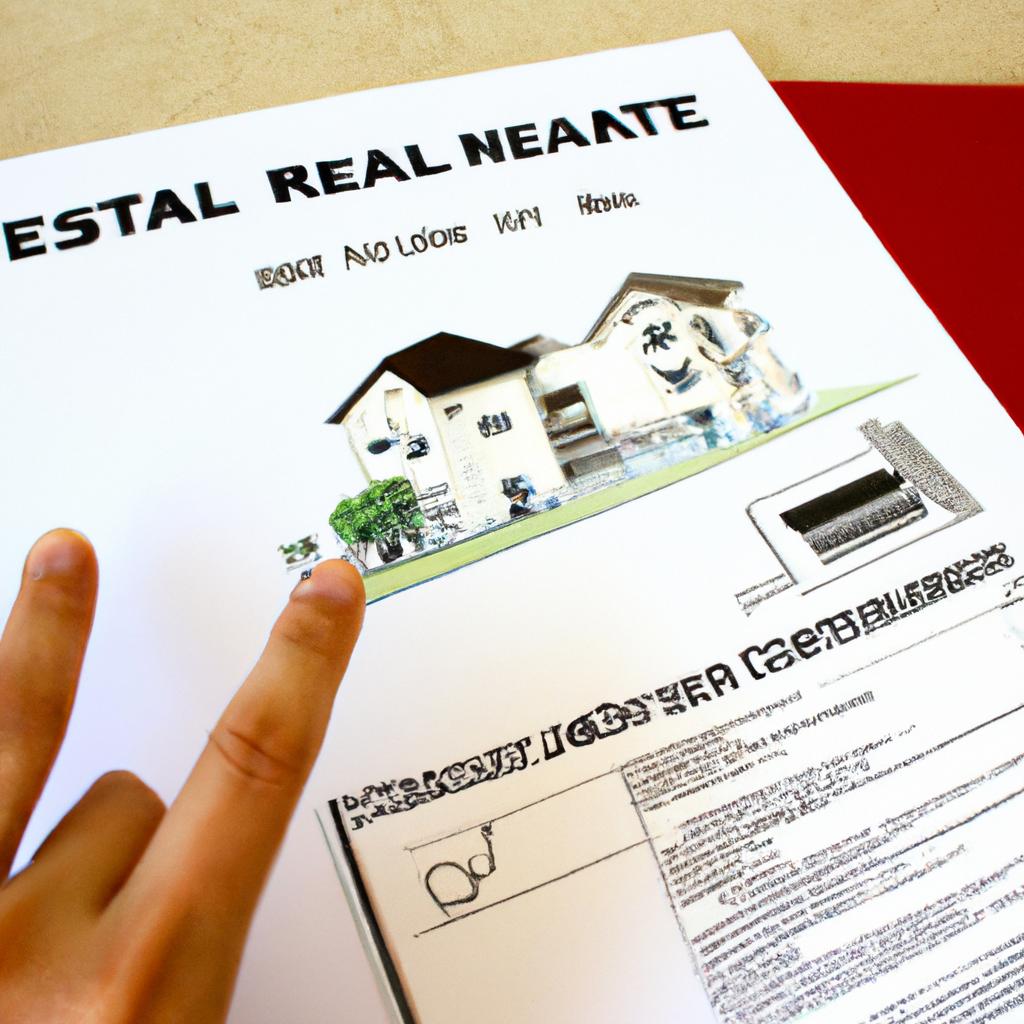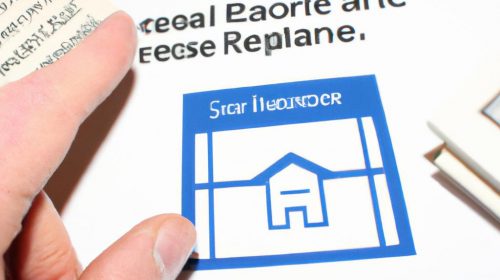Cost Approach in Real Estate Appraisal: Explained for Business Owners
The cost approach is a widely used method in real estate appraisal that provides business owners with valuable insights into the value of their properties. By estimating the cost to replace or reproduce a property, taking into account depreciation and obsolescence, this approach allows for a comprehensive evaluation of its worth. For instance, consider a hypothetical scenario where a business owner seeks to determine the value of their commercial building. The cost approach would involve assessing various elements such as construction costs, land value, and any necessary adjustments based on market conditions.
Understanding the intricacies of the cost approach is essential for business owners who want to make informed decisions regarding their real estate investments. This article aims to explain the fundamentals of the cost approach in real estate appraisal while catering specifically to the needs and interests of business owners. Through an exploration of key concepts and methodologies employed in this valuation technique, readers will gain insight into how it can be applied effectively within their own contexts. Additionally, considerations will be given to potential limitations and challenges associated with implementing the cost approach, providing a balanced perspective on its practicality and relevance in today’s dynamic real estate market.
Definition of cost approach
Definition of Cost Approach
The cost approach is a method used in real estate appraisal to estimate the value of a property based on the costs required to reproduce or replace it. It assumes that an informed buyer would not pay more for a property than the cost of acquiring an equivalent piece of land and constructing a similar building, considering both depreciation and obsolescence factors.
To illustrate this concept, let’s consider a hypothetical case study involving a commercial office building. Suppose there is a 10-year-old office building located in a prime business district with similar properties selling at high prices. However, due to changes in market demand and advancements in technology, potential buyers may be hesitant to pay top dollar for such buildings when they can acquire newer structures with modern amenities elsewhere. In this scenario, the cost approach becomes particularly relevant as it provides an objective framework for determining the property’s worth.
Using markdown format, here are four key aspects highlighting the importance of cost approach:
- Accuracy: The cost approach allows appraisers to derive estimates by considering various elements involved in construction, including materials, labor costs, permits, and other expenses.
- Insurance Purposes: Insurance companies often rely on the cost approach to determine replacement costs for coverage purposes. This ensures that policyholders have adequate protection against loss or damage.
- Tax Assessment: Local governments also utilize the cost approach during property tax assessments since it provides a logical basis for evaluating taxable values.
- Investment Analysis: Investors interested in purchasing income-generating properties use the cost approach as one factor among several others when making investment decisions.
Additionally, we present below a table summarizing three advantages and challenges associated with using the cost approach:
| Advantages | Challenges |
|---|---|
| Objective analysis | Reliance on accurate data |
| Provides baseline value | Difficulty assessing depreciation |
| Widely accepted methodology | Limited application for unique properties |
In conclusion, the cost approach in real estate appraisal offers a systematic framework for estimating property value based on replacement or reproduction costs. By considering various factors such as materials, construction expenses, and depreciation, this method provides objective insights into the market worth of a property. In the subsequent section about the “Purpose of Cost Approach in Real Estate Appraisal,” we will delve deeper into how this approach serves specific objectives within the field.
Purpose of cost approach in real estate appraisal
Having established the definition of the cost approach, let us now delve into its purpose and significance in real estate appraisal. To illustrate this further, consider a hypothetical scenario where a business owner is planning to purchase a commercial property situated downtown. The cost approach can provide valuable insights into understanding the property’s worth based on replacement costs.
Purpose of Cost Approach in Real Estate Appraisal:
The primary objective of utilizing the cost approach method in real estate appraisal is to determine the value of a property by estimating the costs required to replace or reproduce it. This approach assumes that an informed buyer would not pay more for acquiring a property than what it would cost to build an equivalent substitute with similar utility. By considering both current construction costs and depreciation factors, appraisers aim to arrive at an accurate valuation that reflects market conditions.
To better grasp the importance of employing the cost approach, here are some key considerations:
-
Insurance Purposes: When determining insurance coverage for a property, insurers often rely on estimates derived from the cost approach to calculate replacement values accurately. This ensures that policyholders have adequate coverage against potential damages or loss.
-
New Construction Analysis: Developers and investors contemplating new construction projects utilize the cost approach as part of their feasibility studies. Estimating overall project costs aids in assessing profitability and determining whether investing resources into development aligns with anticipated returns.
-
Unique Properties: Properties with distinctive features or those lacking comparable sales data benefit significantly from using the cost approach. An appraiser can evaluate such properties based on their individual characteristics rather than relying solely on market comparisons which may be limited or unavailable.
-
Historical Buildings: Preservation organizations employ the cost approach to assess historical buildings’ value while considering restoration efforts and required maintenance. This approach allows for a comprehensive evaluation that acknowledges the unique characteristics and historical significance of these properties.
Table: Depreciation Factors
| Age (Years) | Physical Deterioration (%) | Functional Obsolescence (%) | External/Environmental Obsolescence (%) |
|---|---|---|---|
| 0-5 | 0 | 0 | 0 |
| 6-10 | 1 | 1 | 0 |
| 11-20 | 2 | 2 | -1 |
| >20 | Increased deterioration | Increased obsolescence | Decreased desirability |
In conclusion, the cost approach is an essential tool in real estate appraisal, providing valuable insights into property value estimation. Its purpose extends beyond traditional market comparisons by considering replacement costs and depreciation factors. Understanding this method’s significance can aid business owners in making informed decisions about property acquisition or development projects.
With the purpose of the cost approach established, let us now explore its components and how they contribute to a comprehensive valuation methodology.
Components of cost approach
Transition from the Previous Section:
After understanding the purpose of cost approach in real estate appraisal, let us now delve into its various components. By examining these key elements, business owners can gain a comprehensive perspective on how this approach contributes to accurate and reliable property valuations.
Components of Cost Approach
To grasp the intricacies of cost approach, it is essential to explore its fundamental components. These components enable appraisers to estimate the value of a property by considering the costs involved in constructing an equivalent replacement or reproducing it with similar features and functionality.
One way to evaluate these costs is through a case study example. For instance, consider a commercial building that has recently suffered substantial fire damage. In applying the cost approach method, an appraiser would assess the expenditures necessary to recreate the structure based on current market prices for labor, materials, and associated fees.
In utilizing cost approach methodology effectively, appraisers typically take into account several factors including:
- Physical Depreciation: The reduction in value due to wear and tear over time.
- Functional Obsolescence: Loss of value caused by outdated design features or inadequate layout that affects utility and desirability.
- External Obsolescence: Decrease in property worth resulting from external influences such as environmental changes or economic conditions.
- Land Value: Assessment of land’s contributory worth independent of improvements made upon it.
This evaluation process requires meticulous attention to detail as each component plays a crucial role in determining an accurate valuation under cost approach analysis. To illustrate further, consider the following table showcasing hypothetical values assigned to different aspects affecting overall property worth:
| Component | Hypothetical Value ($) |
|---|---|
| Physical Depreciation | 50,000 |
| Functional Obsolescence | 30,000 |
| External Obsolescence | -20,000 |
| Land Value | 100,000 |
By incorporating these components into the cost approach analysis, appraisers can provide business owners with a comprehensive understanding of how different factors impact a property’s value.
Transition to Next Section:
In order to effectively apply the cost approach technique in real estate appraisal, various steps need to be followed. Understanding these steps is vital for business owners seeking reliable and accurate valuations for their properties.
Steps involved in applying cost approach
Components of Cost Approach in Real Estate Appraisal
In the previous section, we discussed the concept of cost approach in real estate appraisal. Now, let’s delve into the various components that make up this approach. To illustrate these components, consider a hypothetical scenario where you own a commercial property and want to determine its value using the cost approach.
The first component is land value, which refers to the worth of the underlying land on which the property is situated. In our case study, imagine your property is located in a prime downtown area with high demand for commercial space. As a result, the land value would be relatively higher compared to properties in less desirable locations.
Next, we have direct costs or hard costs involved in constructing or replacing the property. This includes expenses such as materials, labor, permits, and any other tangible factors directly related to building a similar structure. For instance, if your property was constructed recently and adheres to modern construction standards, the direct costs associated with replicating it would be significant.
Another vital component is indirect costs or soft costs incurred during development. These include expenses like architectural design fees, legal fees, financing charges, and project management fees. Incorporating these indirect costs provides a more comprehensive understanding of the total investment required when determining value through the cost approach.
To further emphasize the significance of considering all these components within the cost approach framework for business owners like yourself contemplating real estate investments or valuations:
- It allows you to gauge whether purchasing an existing property or embarking on new construction aligns better with your financial goals.
- By factoring in both direct and indirect costs accurately during valuation processes, you can make informed decisions about potential returns on investment.
- Understanding how different factors impact overall value helps identify opportunities for cost optimization and risk mitigation strategies.
- The cost approach aids in establishing reasonable asking prices when selling your commercial property by taking into account market trends alongside replacement costs.
With these key components in mind, let’s now explore the steps involved in applying the cost approach to real estate appraisal.
Advantages of Cost Approach for Business Owners
Advantages of cost approach for business owners
Transitioning from the previous section, let us now explore some limitations that business owners should be aware of when applying the cost approach in real estate appraisal. To illustrate these limitations, consider a hypothetical case study involving a small retail store located in a bustling downtown area.
First and foremost, one limitation is that the cost approach does not account for market fluctuations or changes in demand. In our case study, suppose there is a sudden surge in popularity for online shopping, resulting in decreased foot traffic and reduced sales for physical retail stores. The cost approach may not accurately reflect this shift as it primarily focuses on the reproduction or replacement cost of the property without considering external factors.
Secondly, the accuracy of the cost approach heavily relies on obtaining precise data regarding construction costs, land values, and depreciation rates. However, acquiring reliable information can sometimes pose challenges due to variations across locations and timeframes. For example, if construction costs have significantly increased since the original building was constructed several years ago, an appraiser using outdated figures might overestimate the value under the cost approach.
Additionally, while emotional attachments can influence buyers’ decisions, they are often overlooked by the cost approach. Emotional appeal plays a crucial role in certain types of properties such as historical buildings or landmarks with cultural significance. Neglecting this aspect could lead to undervaluation or failure to capture intangible benefits associated with owning such properties.
To further understand these limitations visually:
Factors limiting effectiveness of cost approach
- Market fluctuations
- Data precision challenges
- Overlooking emotional appeal
Consider the following table showcasing how different factors impact valuation under the cost approach:
| Factors | Impact on Valuation |
|---|---|
| Market Fluctuations | Underestimation |
| Data Precision | Overestimation |
| Emotional Appeal | Undervaluation |
Moving forward to the next section, let us now delve into the alternative approaches that can complement or overcome these limitations in real estate appraisal.
Limitations of cost approach in real estate appraisal
Advantages of cost approach for business owners:
Having discussed the advantages of using the cost approach in real estate appraisal, it is important to also acknowledge its limitations. Understanding these limitations will allow business owners to make informed decisions when utilizing this method.
The cost approach provides valuable insights into property valuation, but it is not without its limitations. Firstly, one key limitation lies in the assumption that a buyer would be willing to pay the full replacement cost for a property. In reality, buyers may consider factors such as market conditions and potential income generation before determining their purchasing price. For example, let’s consider an industrial warehouse assessed using the cost approach at $1 million due to high construction costs. However, if similar properties are available on the market for only $800,000 due to lower demand or better location, a buyer might find the cost-based assessment less attractive.
Furthermore, the cost approach assumes that all improvements made to a property increase its value equally. This fails to account for depreciation or obsolescence that may occur over time. For instance, technological advancements can render certain features or equipment outdated, reducing their contribution to overall value. Business owners need to recognize that new developments might offer more efficient systems or layouts that decrease operating costs compared to older structures built at higher expenses.
Lastly, the reliance on accurate data becomes crucial while applying the cost approach. Obtaining reliable information regarding current material and labor costs can present challenges in volatile markets where prices fluctuate rapidly. Additionally, estimating depreciation accurately requires expertise and knowledge of industry standards and trends.
To summarize:
- The willingness of buyers to pay full replacement costs may vary based on market conditions.
- Not all improvements hold equal value over time as they can become obsolete or depreciate differently.
- Gathering accurate data poses challenges due to fluctuating material and labor costs.
- Expertise is necessary for accurately assessing depreciation rates according to industry standards.
By recognizing these limitations, business owners can better utilize the cost approach while considering market dynamics and potential depreciation factors. It is important to supplement this method with other approaches or valuation techniques for a comprehensive understanding of a property’s worth.



